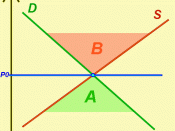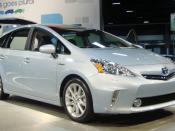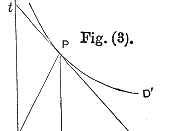Article Analysis: The Supply and
Demand of Hybrid Vehicles
The purpose of this paper is to summarize the article, "Hybrid vehicles hot in state, but supply is limited" and explain why changes occurred in supply, demand, and price. After reading this paper, the audience should be able to understand why the hybrid is in high demand, why car manufacturers are receiving the asking price, and how supply and demand may affect the prices of hybrids in the near future. For the purpose of clarity, the article defines a hybrid as a vehicle that can alternatively operate with either gasoline or an alternate fuel such as an electric battery.
Discussion
Summary
According to Gillete, the demand for hybrid vehicles is considerably higher than the supply of the hybrids offered by manufacturers. The primary drive behind the purchase of a hybrid lies with the ever-increasing cost of fuel. However, the hybrid sales are also increasing due to its appeal to a variety of buyers, good resale value, and a tax break.
Customers who want to purchase a Prius, a popular Toyota hybrid, must be placed on a waiting list and cannot even test drive the model because the models are pre-sold before the cars even arrive at the lot. As more companies introduce hybrid models, the demand for the hybrids is expected to grow.
The price of the hybrid vehicles is at least $2,000 higher than the price of non-hybrids. Additionally, the prices of the vehicles are not flexible due to the high demand and negotiations are non-existent. Thus, supply and demand will simultaneously increase while customers will pay more out-of-pocket to own a hybrid. The article concludes that the hybrid is the car of the future and with gas prices on the rise, the prediction could prove to be correct.
Changes in demand/supply
Soaring gasoline prices, a shift factor of demand, resulted in rising consumer interest in hybrid vehicles and ultimately increased demand for hybrids. Since the hybrids were relatively new to the market, manufacturers only released a limited supply. Thus, the quantity demanded for hybrid vehicles exceeded the supply of hybrids and created a market that was not in equilibrium. In response to the excess supply, various manufacturers developed more models of hybrids in an effort in increase supply and simultaneously offer more choices to the consumers.
Changes in price
Because an excess demand exists in the market for hybrids, the typical price negotiations do not take place. Potential customers are placed on waiting lists and the cars are often sold before they even arrive at the lot. If a potential buyer on the list does not wish to pay the asking price, someone else on the list will be willing to pay the sticker price in order to obtain the hybrid. The demand for the hybrids is enough that consumers are paying a few thousand more to own a hybrid than a gasoline fueled vehicle.
Changes of price elasticity of demand
Currently, the demand of hybrids is such that prices are not negotiable and demand exceeds supply. These factors leave little room for elasticity in cost. However, with the growing number of hybrid models filtering into the market, consumers will have more choices to choose from and competition may eventually help to lower the price of the hybrids. Tax breaks can also lower the cost of the hybrids but one must wait until tax season to reap the benefits.
Conclusion
In conclusion, the article provides insight to the reader regarding the excess demand, limited supply, and price of hybrids. Due to high cost of gasoline, the quantity of hybrids far exceeds the supply of hybrids. Consumers are willing to pay more for a hybrid because of the short supply and the need to use alternate fuel. Manufacturers are responding to the high demand and increase profits by offering more models of hybrids. One can predict that the increase in supply may eventually lower prices and result in market equilibrium.
References:
Gillette, B. (2005, May 23). Hybrid vehicle sales hot in state, but supply is limited.
Mississippi Business Journal, 27, 20. Retrieved May 8, 2006, from MasterFILE Premier database.
University of Phoenix. (Ed.). (2004). Introduction: Thinking like an economist.
[University of Phoenix Custom Edition e-text]. The McGraw-Hill Companies. Retrieved May 8, 2006, from University of Phoenix, Resource, ECO/360-Economics for Business I Web site: https://ecampus.phoenix.edu/ secure/resource/resource.asp


